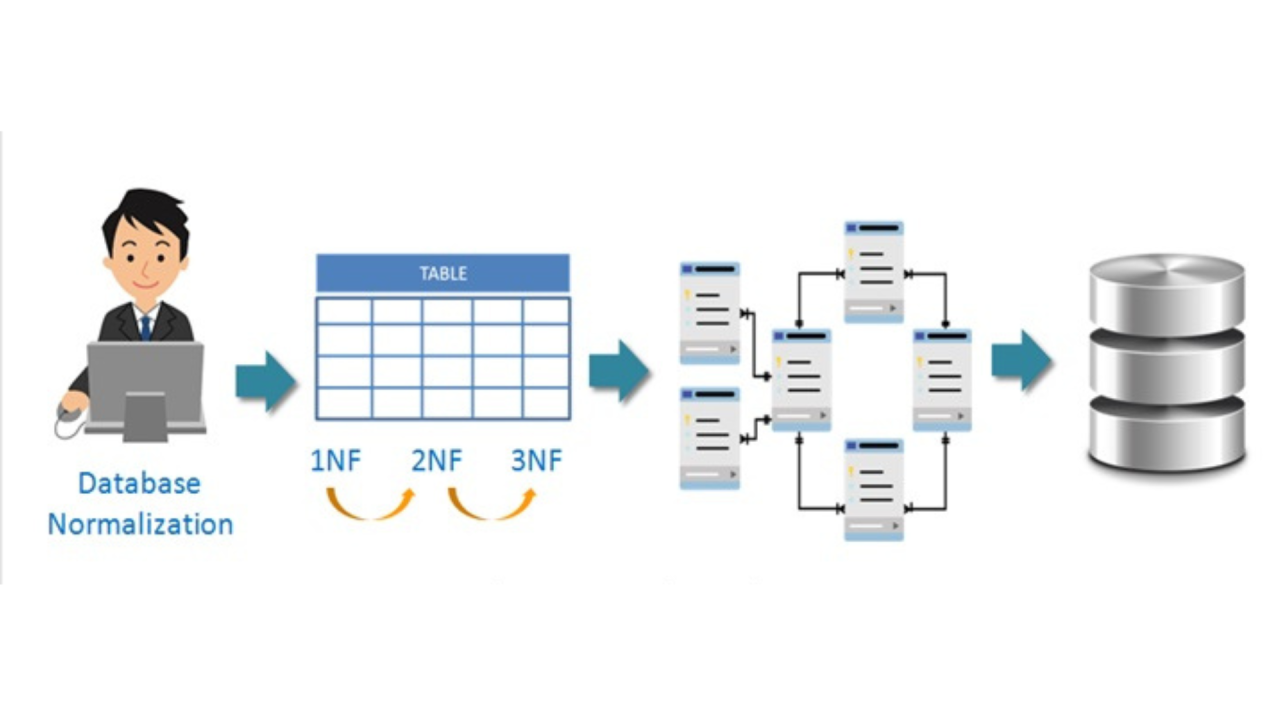Unit5
Unit5
Topic: Advanced Database Normalization and Design Principles
Learning Objectives:
- Understand principles of good relational database design, focusing on minimizing null values, redundancy, and modification anomalies.
- Apply normalization techniques up to BCNF, 4NF, and 5NF to achieve efficient database structures.
- Decompose schemas using functional and multivalued dependencies while ensuring lossless and dependency-preserving designs.
- Utilize functional dependency theory, including attribute closure and canonical cover, in database refinement.
- Ensure attribute atomicity and compliance with First Normal Form (1NF).
- Follow systematic database design processes, integrating E-R modeling with normalization techniques.
- Model temporal data by managing valid time periods and maintaining consistency in temporal relations.
Lesson_12
Topic: Database Design and Normalization
Features of Good Relational Designs:
- Relation for Every Entity:
- Each tuple should represent one entity or relationship.
- Attributes should be kept separate for different entities.
- Foreign keys are used to refer to other entities.
- Lesser Number of Null Values:
- Design relations to minimize NULL values.
- Frequently NULL attributes can be stored in separate relations.
- No Spurious Tuples (Decomposition):
- Bad designs may result in incorrect JOIN operations.
- A lossless join property should guarantee meaningful results.
- No Redundancy:
- Redundancy can lead to issues like extra storage, inconsistent data, and anomalies in updates.
- No Modification Anomaly:
- Types of anomalies include:
- Update Anomaly: Inconsistencies when updating data in multiple places.
- Deletion Anomaly: Loss of related data during deletions.
- Insertion Anomaly: Restrictions when inserting data without related information.
Normalization:
- Normalization reduces redundancy and ensures efficient data retrieval.
- Normal forms (1NF, 2NF, 3NF, BCNF) aim to eliminate redundancies and anomalies.
- Functional Dependency: Describes the relationship between attributes. A set of functional dependencies is used to identify schema normalization.
- Decomposition: Splitting relations to avoid redundancy and anomalies while preserving dependencies.
Lesson_13
Topic: Advanced Normalization and Temporal Data
Multivalued Dependencies (MVDs)
- Even if a schema is in BCNF, redundancy may still exist.
- Example: inst(ID, dept_name, name, street, city) — if instructors have multiple departments and addresses → redundancy.
- A Multivalued Dependency X →→ Y holds if for each X, the set of Y values is independent of other attributes.
4NF (Fourth Normal Form):
- A schema is in 4NF if, for every non-trivial MVD X →→ Y, X is a superkey.
- Fixing redundancy: Decompose into separate relations.
- From inst(ID, dept_name, street, city) → split into:
- r1(ID, name)
- r2(ID, street, city)
More Normal Forms
- 5NF / PJNF (Project-Join Normal Form):
- Generalizes multivalued dependencies.
- Eliminates redundancies not captured by 4NF.
- DKNF (Domain-Key Normal Form):
- Based on general constraints beyond FDs and MVDs.
- Not practical due to complexity (no complete inference rules).
Atomic Domains & 1NF
In 1NF, all attributes must be atomic:
- Indivisible; no internal structure.
Non-atomic examples:
- Composite attributes: address (street, city, state)
- Multivalued attributes: phone_numbers
- Encoded values: employee_ID = “HR045” (where “HR” encodes dept)
Why atomicity matters:
- Reduces redundancy
- Prevents inconsistency
- Easier querying and indexing
Fix:
- Split composite values into individual attributes.
- Avoid multivalued fields.
Database Design Process
- Design can start from:
- E-R Diagram: Best if well-designed.
- Single schema: Normalize after initial design.
- Ad-hoc schema: Normalize iteratively.
Good practices:
- Use meaningful names (avoid vague terms)
- Ensure unique role of each attribute
- List keys first in schema
- Normalize early, denormalize only when needed for performance
Modeling Temporal Data
- What is temporal data?
- Data valid over a specific time period.
- Example: A course might have different titles in different years.
- How to handle it:
- Add start_date, end_date columns.
- Avoid overlapping time intervals for the same entity.
- When data changes → insert new row with new valid period.
- Functional dependencies may only hold within a snapshot in time.
Temporal Keys & FKs:
- Primary keys should include time (e.g. (course_id, valid_period))
- Temporal foreign keys must validate across time ranges
Conclusion:
- From these lessons, I’ve learned how important proper database design is for keeping data clean, consistent, and easy to manage. I now understand how normalization helps remove unnecessary data and avoid problems like update, delete, and insert anomalies.
- Learning about different normal forms like 1NF, BCNF, and 4NF, along with concepts like functional and multivalued dependencies, gave me a clear idea of how to improve database structure. I also found it interesting how temporal data is handled using time periods.
- Overall, this unit helped me build a strong foundation in designing better and more efficient databases.
This post is licensed under CC BY 4.0 by the author.

